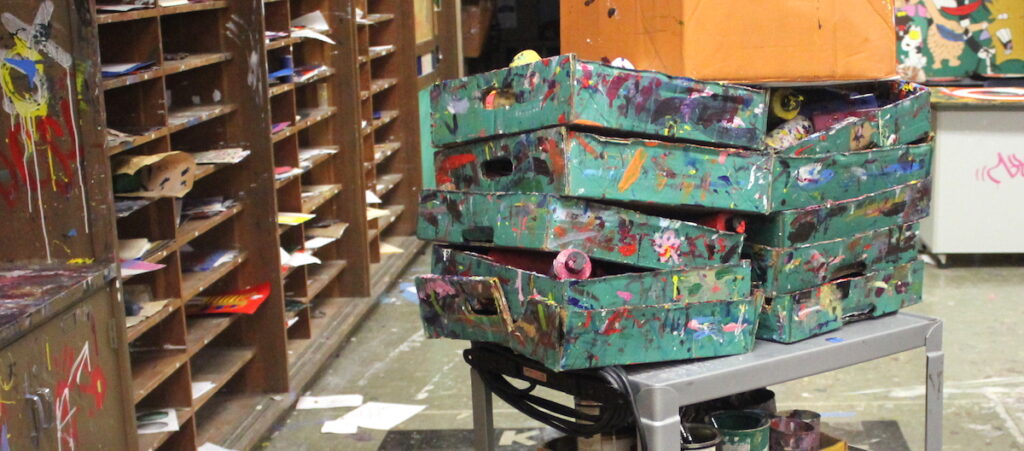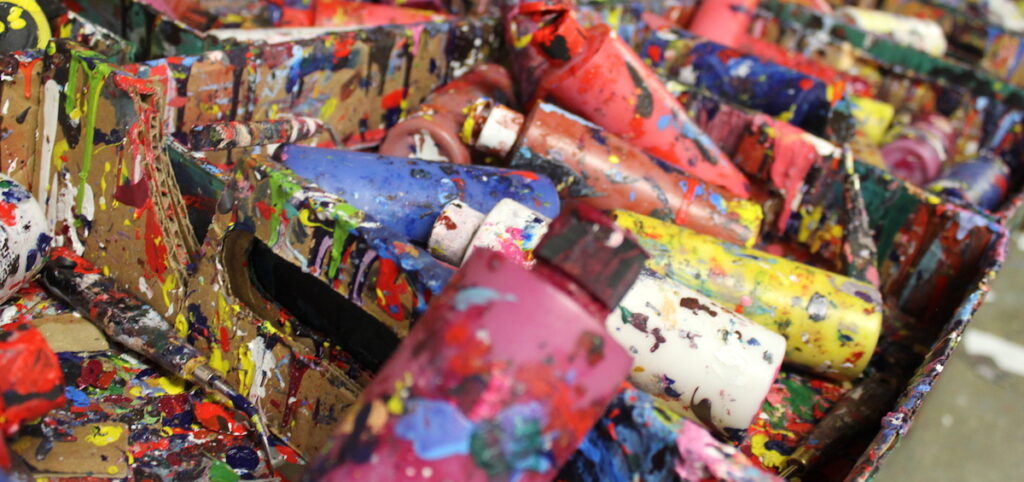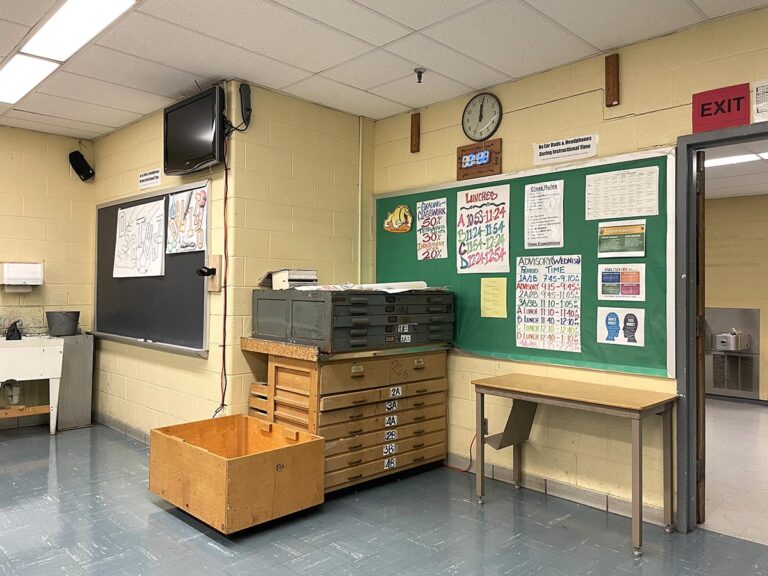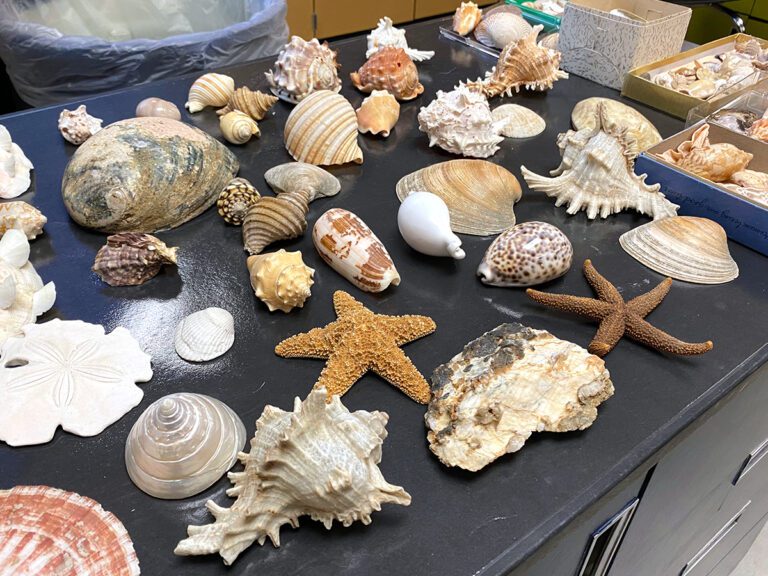Has organizing the materials you need for painting ever become a pain? Many art educators have expressed their distaste for painting because of the effort required to manage the supplies. Whether you have your own classroom, share a room with other teachers, or are pushing an art cart through the halls, there are some key strategies to help stay organized when painting with students.
Here are some important tips to keep your painting supplies in check.
1. Organize with Cardboard Paint Flats
Cardboard paint flats are the boxes paint stores use to ship gallons of paint. They hold four gallons of paint and have handles. These flats make the perfect organizer for painting supplies. Instead of having a designated area in the classroom where students go to pump or pour paints, put squeeze bottles and palette knives in these boxes and have students bring them to their tables.
These boxes also stack nicely. Ten flats full of paint tubes and palette knives can stack up quickly and are easily transportable. You can put them on top of a cart in thirty seconds or less, or you could stash them in a corner of the room if another teacher shares your room with you. Even if you have your own art room, having flats with the paints in them allows for one person to grab everything needed for an entire table of students in seconds. This strategy can save time and makes cleanup less chaotic.
Plus, one extra flat can hold ten to twelve water cups and a cup for brushes. If you’re on the run or need to conserve space, this is a great way to keep everything in one place.

2. Provide a Limited Number of Colors
You don’t need to provide your students with every color in the rainbow. Red, yellow, blue, magenta, and white will create a vast spectrum. Plus, having to mix colors helps students gain a deep understanding of color theory.
3. Use Squeeze Tubes
Squeeze tubes make it easy for students to dispense paint themselves. There can be an adjustment period when learning how much paint to use, but a clear demonstration and frequent reminders will help.

4. Use Cardboard Palettes
If it’s not clear already, cardboard can be a painting unit’s best friend. Instead of purchasing the plastic paint palettes with the little built-in bowls for individual colors, cut up some small rectangles of cardboard instead. If you use acrylic paint, students can mix the paint on the cardboard and then scrape their paint flat at the end of the class. Once the paint dries overnight, they can return the next day and reuse the cardboard palette. Cardboard palettes scraped and left to dry can last for years. In fact, the average cardboard palette in my room lasts four to five years. Not only are cardboard palettes easy for cleanup time and management purposes, they look really interesting over time with all the different layers of paint.
5. Create a Palette Management System
In order to keep the palettes organized, use two larger boxes. One box should be labeled “dry” and the other “wet.” Students coming into class will grab palettes out of the “dry” box. At the end of class, students will scrape their palettes and put them in the “wet” box to dry overnight.
Color-coordinating these boxes with warm and cool colors can help students choose the correct box at first. Orange can be associated with warmth, desert, or dryness, and blue can be associated with cool, water, or wetness. Students pick up the procedure to grab from the dry box at the beginning of class and return to the wet box at the end of class relatively quickly.
These two palette boxes can also be stacked up and stashed on a cart or in a corner. The only extra work this method requires is to transfer the palettes from the wet box to the dry box each day. After palettes dry overnight, they are ready for students to use the following day. Before the first class comes in, you will need to peel apart the dry palettes and place them back in their dry box location. Better yet, assign a student to help you with this task.
Regardless of your teaching scenario, painting is going to go much better for everyone if the supplies are organized well. There is no one best method, but this system has worked well in my classroom for years. Although it looks messy at first glance, there really is a method to the madness! So, if you’ve been struggling, give this cardboard idea a try. With free boxes, what do you have to lose?
What tricks do you have for keeping your painting supplies organized?
How do you have students dispense paint in your classroom?
Magazine articles and podcasts are opinions of professional education contributors and do not necessarily represent the position of the Art of Education University (AOEU) or its academic offerings. Contributors use terms in the way they are most often talked about in the scope of their educational experiences.





